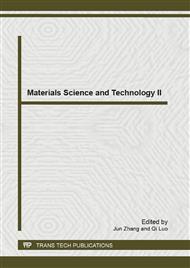p.402
p.409
p.413
p.418
p.423
p.430
p.434
p.438
p.443
Surface Finish Assessment of Polishing Process of Tool Steels by Abrasion, Using Diamond and Alumina Particles
Abstract:
The present work investigates the surface finishing of two mould tool steels (WNr 1.2738~P20 and WNr 1. 4305) after polishing by conventional method and automatic laboratory equipment. These steels are employed in the fabrication of polymer injection moulds due to its good machinability, homogeneous microstructure and hardness. The polishing process was performed in laboratory by manual and automated processes. The surface finishing was measured by mechanical and optical methods. In the manual polishing, SiC paper grit 320, 600 and 1200 was used. Final polishing was carried out with polishing cloth containing 0.3 μm alumina suspension or 6 μm and 1 μm diamond suspension. Alternately, polishing of steel specimens in the specially developed laboratory automatic equipment was performed using a large rotating disc at 140 rpm, nominal pressures of 0.013 Pa, 0.139 Pa and 0.244 Pa and diamond paste with particle size 1 μm. Surface finish of specimens were compared as a function of the particle size and polishing time by three methods: the roughness parameter Rz (mean of maximum roughness depth) using a stylus probe, light reflectance with an integrating sphere connected to a spectrophotometer, and reflected diffuse light intensity analysis of a He-Ne laser. Specimen surface images were also obtained by an optical microscope to compare the topography after polishing. From the plot of roughness measurements versus particle size and intensity of diffuse light versus particle size, it was observed that both roughness parameter Rz and the intensity of diffuse light decreased linearly with the abrasive particle size for the manual polishing method. The method of light reflectance measurements shows an approximately constant value of 55 % for all particle size. Therefore, the better methods to assess surface finish of tool steels are the roughness parameter Rz and the intensity of diffuse light by laser method. For the automatic polishing, the results show that there is an optimized time for minimum roughness which is 5 minute. Other relevant aspects of surface finish by particle abrasion are also discussed.
Info:
Periodical:
Pages:
423-429
Citation:
Online since:
July 2013
Keywords:
Price:
Сopyright:
© 2013 Trans Tech Publications Ltd. All Rights Reserved
Share:
Citation:


